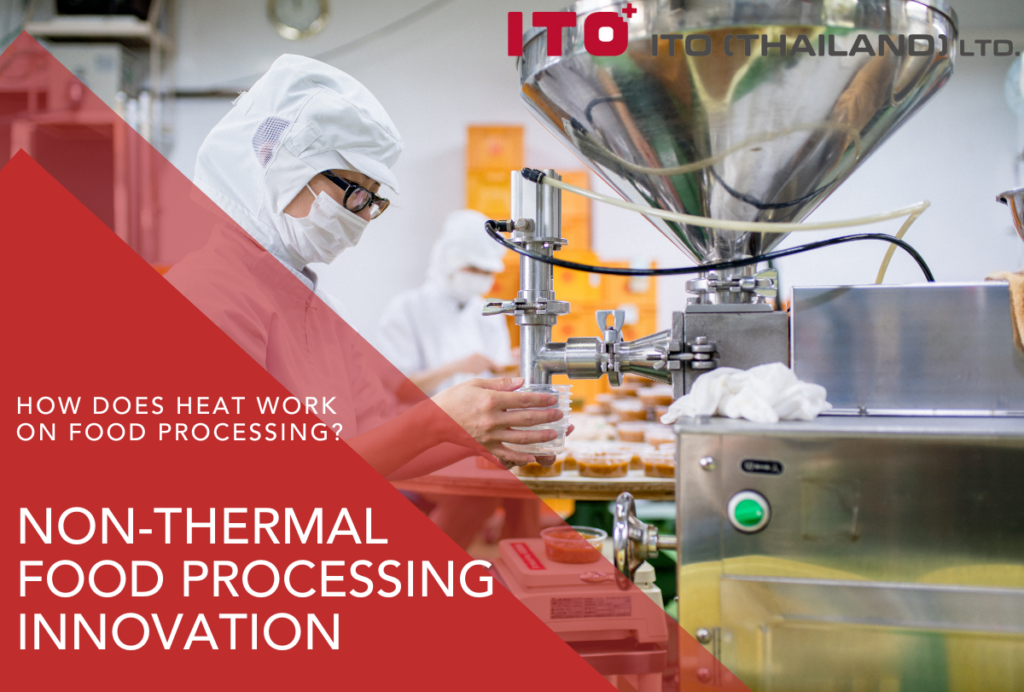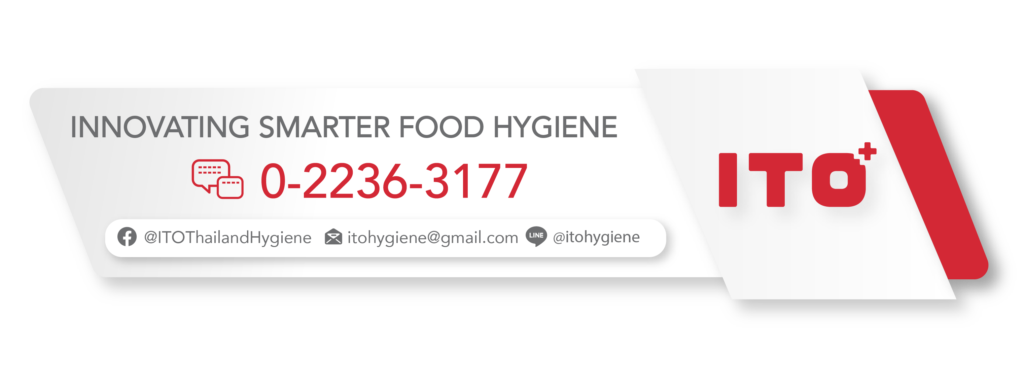ITO Thailand Hygiene Blog
Non-thermal food processing innovation
Heat helps food to be cooked and kills pathogens in food as well. However, nowadays many non-thermal food preservation technologies have been developed. Why this innovation is introduced? Let’s learn about this innovation and its advantages.
How does heat work on food processing?
First of all, we should understand how heat affects foods. Heating is to give energy to an object making that object to have enough energy to cause chemical reactions such as denaturing proteins of muscle fibers and milk proteins including proteins in the structures of enzymes and microorganisms in foods, changing the state of substance or its structural arrangement (e.g., chocolate turning into liquid, starch gelatinization, evaporation of water in food, expansion of gas in food), browning (e.g., caramelization or burnt meat), changing the flavors, etc., resulting to safe food products with quality acceptable by the consumers.
However, heating also causes several adverse reactions to food quality such as loss of vitamins or functional substances in heat sensitive foods, loss of volatile compounds generating unique flavors of fresh foods (e.g., the distinct flavors of fresh fruits and thermal processed juices) or specific needs (e.g., to kill microorganisms in fresh eggs without making the eggs to be cooked, etc.). In addition, overheating may stimulate the formation of undesirable substances in food; for example, carcinogens.
Therefore, this is why the new techniques to produce the safe foods for consumers are introduced to better maintain the sensory quality, be more beneficial to health or reduce the danger caused by the use of high heat in food production. As for the methods, presently heating at high temperature is used only for a very short period of time such as UHT (Ultra-High temperature processing) milk or juice processing in order to preserve sensory quality and functional substances, or a very new method of heating (Ohmic heating) is used to heat foods more rapidly in order to preserve nutritional value and sensory quality which we will introduce in the next occasion.
Non-thermal processing for food production
In the past, food preservation process had extended food life, maintained food quality and safety without using heat conduction or convection from external heat sources such as baking, boiling, steaming, frying, etc. Instead, chemical methods are often used such as disinfectants, acids, reduction of water activity with salt or sugar, etc. In addition to using chemical substances, the use of radiation to kill microorganisms in certain foods and to eliminate insect larvae is also widely used.
Presently, many new approaches are used in food preservation; for example:
•Use of light waves and UV radiation
Due to the light or UV may affect the genetic material of microorganisms or damage the cell wall including causing heat for a short period of time enabling to destroy microorganisms which is suitable for destroying microorganisms on the surface (Read more).
•Use of pressure
Nowadays, the use of pressure preservation is becoming more and more popular because the pressure can destroy microorganisms due to the cell wall and components of microorganisms cannot withstand the high pressure, as well as, the enzymes can be inhibited without using the heat. In addition, another advantage is food can be packed in package and have both of them sterilized at the same time. (Package must be designed to withstand the pressure) (Read more).
•Use of pulsed electric field
Pulsed electric field uses electricity to destroy the structures of microorganisms by electroporation. This approach is commonly used in fluid or liquid food products due to being able to sterilize in seconds [1].
•Use of ultrasound
Supersonic waves are used to cause the cavitation effect or micro-cavitation due to the air is compressed into bubbles and collapse enabling the localized heating to increase up to 5500°C and a high pressure up to 50 MPaa causing the damage to cell membranes and the structures in microbial cells. In addition to disinfection, the use of supersonic waves may also be used for other purposes in food production processes such as reduction of foam formation, elimination of gas from liquid, help in filtration, drying, freezing and crystallization, etc. [2]
•Use of supercritical fluid
Supercritical fluid is caused by extraction the substance to have a temperature and pressure above the critical point until its state is a mixture of gas and liquid properties. For the food industry, carbon dioxide is commonly used to extract the supercritical fluid due to using relatively low temperature and pressure (31.1°C and 7.4 MPa) [3]. The mechanism of destroying microorganisms is caused by the supercritical fluid pulled out the components inside the microbial cells causing the cells to become more acidic and to have abnormal intracellular pressure, as well as, to destroy the cell membranes and enzymes [4].
•Use of ozone
Ozone gas is a reactive gas with disinfection effect to destroy cell membrane proteins [3] which may be used in the form of a gas or ozonate water by filling ozone gas into the water in the form of micrometer or nanometer gas bubbles so that ozone gas can better penetrate into the area to be sterilized. For more information about small bubbles, please read here.
However, many of these technologies are still in the research stages. Safety must also be proven prior to actual use in the food industry. Meantime, the government sector must adjust accordingly by establishing the standard criteria, inspection and control in order to ensure the safety of food products produced by these new technologies for consumers. For example, the USFDA’s Food Safety Blueprint for the Modern World also mentioned the needs to adapt and to formulate the new responding measures. Therefore, we are likely to see new regulations coming out to support these technologies in the future.
References
1.Hathaichanok Kantrong, Food Journal, Year 47, Issue 3 (July-Sep. 2017), pp. 39-43. [online: https://kukr.lib.ku.ac.th/kukr_es/BKN_FRPD/search_detail/result/20012765]
2.Zhang, Z. H., Wang, L. H., Zeng, X. A., Han, Z., & Brennan, C. S. (2019). Non‐thermal technologies and its current and future application in the food industry: a review. International Journal of Food Science & Technology, 54(1), 1-13.
3.Jadhav, H. B., Annapure, U. S., & Deshmukh, R. R. (2021). Non-thermal technologies for food processing. Frontiers in Nutrition, 8, 657090.
4.Li, J., Wang, A., Zhu, F., Xu, R., & Hu, X. S. (2013). Membrane damage induced by supercritical carbon dioxide in Rhodotorula mucilaginosa. Indian journal of microbiology, 53, 352-358.
Related Post
-
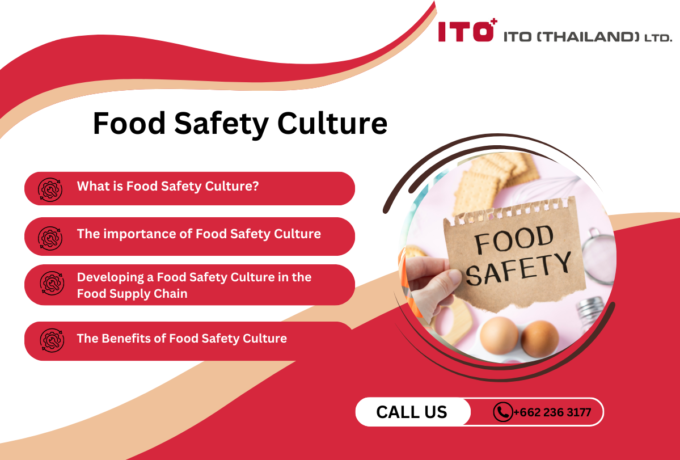
Food Safety Culture
Food safety culture plays a crucial role in safeguarding the company's reputation, ensuring the well-being of its employees, and providing a safe experience for its customers.
-
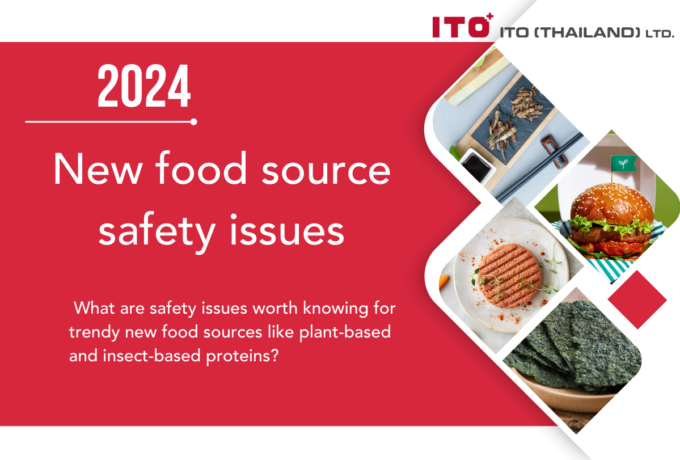
New food source safety issues
What are safety issues worth knowing for trendy new food sources like plant-based and insect-based proteins?
-

British Retail Consortium (BRC) Standard
Food safety management systems play a vital role in ensuring the production and distribution of safe and high-quality food products to consumers. With the global food supply chain becoming increasingly complex, food businesses must implement effective systems prioritising safety, quality, and compliance with industry standards. A food safety management system encompasses a set of procedures, processes, and controls designed to identify, prevent, and manage potential hazards at every stage of the food production and supply process. This proactive approach not only safeguards consumers' health but also protects the reputation and credibility of food companies in an ever more competitive market.
-
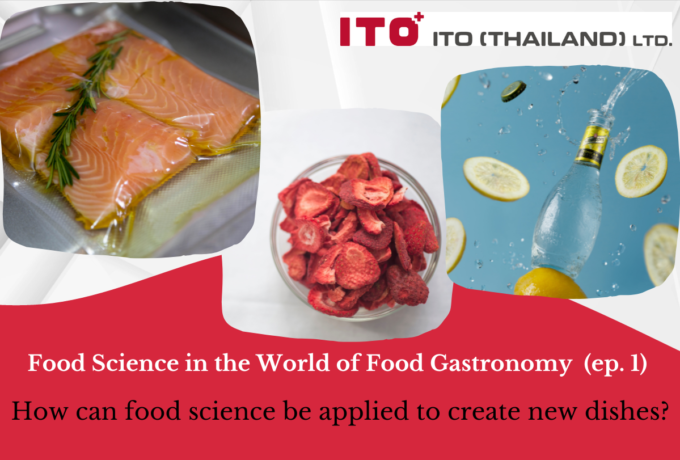
Food Science in the World of Food Gastronomy (Part 1)
How can food science be applied to create new dishes?
-
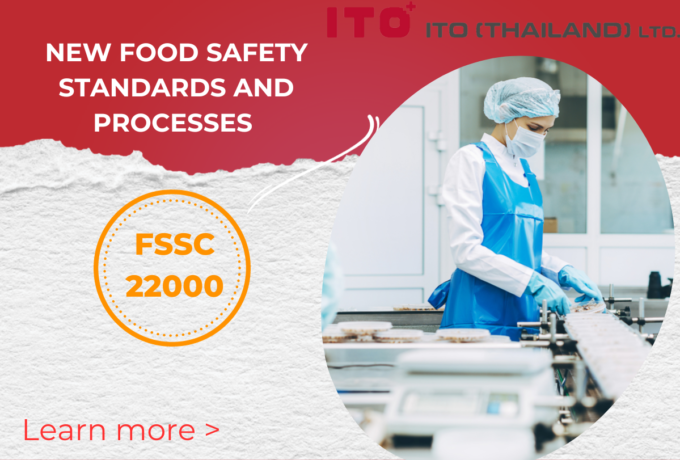
FSSC 22000
Food manufacturers must ensure food safety standards and processes. FSSC 22000 is an official certification program for Food Safety Management Systems (FSMS) recognised by the Global Food Safety Initiative (GFSI). This certification scheme offers a set of guidelines and procedures to ensure uniformity, openness, and safety across your entire supply chain. It applies to all companies operating within the food and beverage industry, ranging from farmers to retailers. By fulfilling the necessary criteria and obtaining FSSC 22000 certification, it is demonstrated that the required standards for food quality and implementing effective processes to manage and mitigate risks associated with food fraud, foodborne illnesses, expensive recalls, and other external threats are met.
-

Food Safety Aspects of Artificial Sweeteners
Artificial sweeteners, also known as sugar substitutes, non-nutritive sweeteners, or high-intensity sweeteners, are artificially produced compounds utilised in place of sucrose (table sugar) to add sweetness to food and drinks. Due to their significantly higher sweetness than regular sugar, only a fraction of artificial sweeteners (200 to 20,000 times less) is required to achieve an equivalent level of sweetness. Since the caloric contribution of these sweeteners, when used in such small quantities, is insignificant, they are often referred to as non-nutritive (4).








